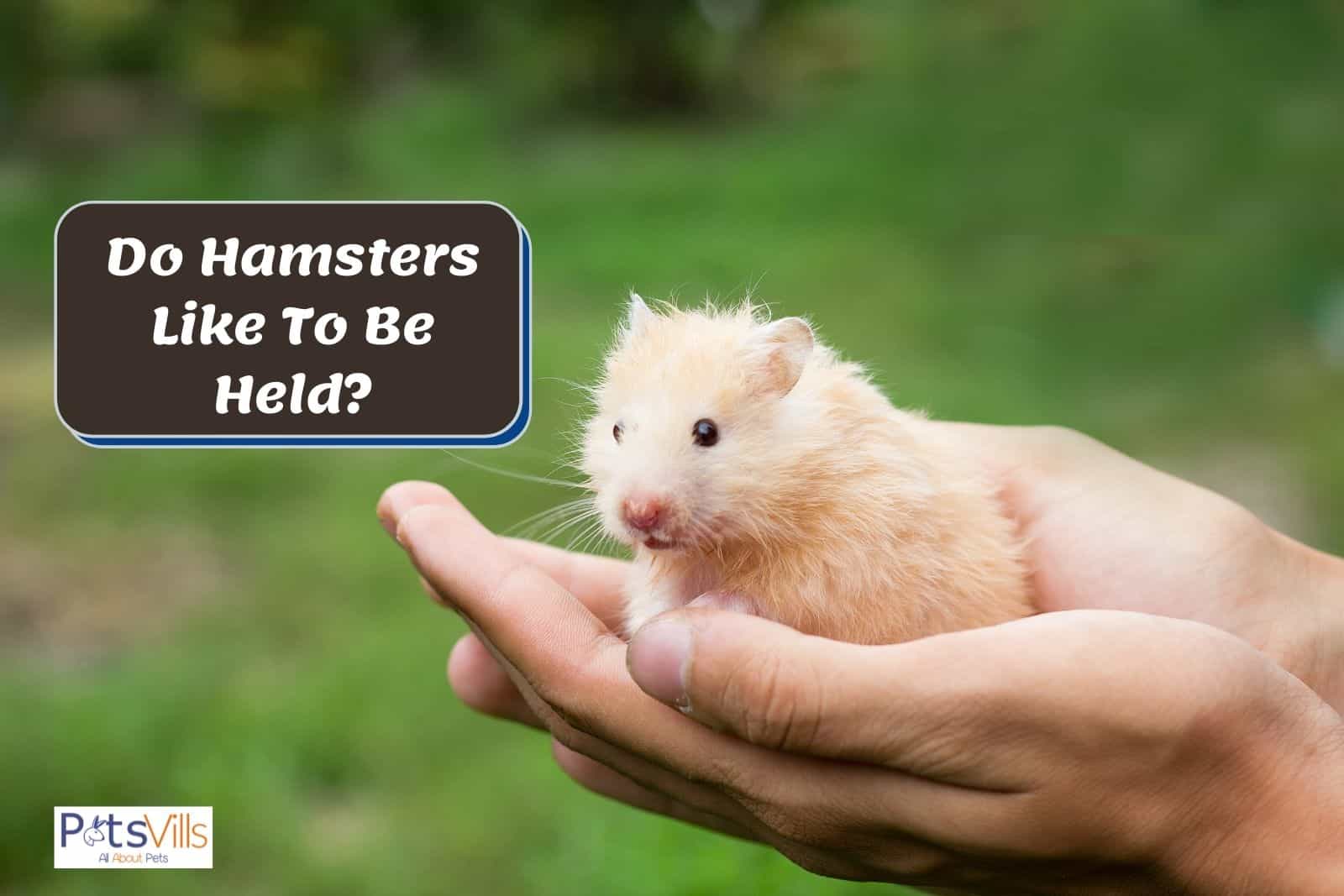Hamsters are tiny and, at times, can be very timid. Some hamsters don’t mind being handled, but others will dislike it to the point where they may bite.
Do hamsters like to be held? Each hamster is different, and it will depend on their personality and how much they trust you.
You should make sure to properly bond with your hamster before picking them up.
Before handling your hamster, you need to gain their trust. You can do this by bonding with your hamster and giving them food from your hand.
If your hamster is new, you need to give them a few days to settle in before interacting with them.
READ MORE: Why is My Hamster Biting Me All of a Sudden?
Table of Contents
Do Hamsters Like to Be Held?
 Hamsters can be trained to enjoy and tolerate being held.
Hamsters can be trained to enjoy and tolerate being held.
They are timid by nature [1], which means they can be fearful when held for the first few times.
Hamsters are prey animals, so when a giant hand swoops in and tries to grab them, they’re likely to panic and try to defend themselves by biting.
(If they are unfamiliar with you).
Your hamster’s species and personality will influence how much he likes being held and how long it takes to tame him.
Some hamsters enjoy being held, while others may only tolerate it for a short amount of time before they are ready to be put back down.
Sure, hamsters may never fully warm to being held but are still comfortable around you in other ways.
However, getting your hamster used to your hand, and the idea of being picked can help him feel more relaxed around you and stop him from viewing you as something to fear.
Doing this will significantly increase your chances of taming your hamster.
Your hamster will gradually start to get used to it the more you pick them up.
If you were to play and pick them up daily, they would soon start to build trust with you and get to know that you’re not going to hurt them.
Get Your Own Hamster Owner’s Handbook!
How to Hold Your Hamster
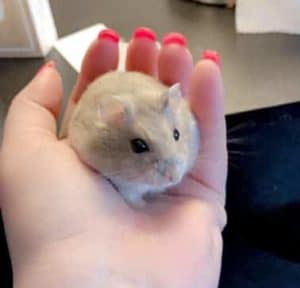 Holding your hamster correctly is key to winning his trust and preventing a nasty bite.
Holding your hamster correctly is key to winning his trust and preventing a nasty bite.
Although just grabbing your hamster to pick him up seems like the most straightforward method, this can be unsettling and frightening for him.
The best technique for picking up your hamster is cupping your hands under him to lift him.
Keep your hands cupped around your hamster as you lift him to act as a kind of cave so he can’t jump or fall off and injure himself.
Next, move your hamster close to your chest or lap to make him feel safer. It would be best if you let him peek his head over your hands.
You should always sit close to the ground when handling your hamster just in case he falls or decides to jump from your hands quickly.
If you’ve just gotten your hamster and they are new, it’s best to wait a couple of weeks before you start to pick them up.
It would be best to build trust and rapport with them first by letting them smell you when you feed them. After a couple of weeks, they will begin to get used to your scent.
When you first start handling your hamster, it’s normal if they seem a little uncomfortable and wants to move away and off your hand.
You need to keep handling your hamster and picking them up so that they gain your trust and get used to being handled.
Here’s a great video to watch:
How to Tame Your Hamster
When getting a new hamster, it’s tempting to pick him up and hold him straight away. However, you should always let a hamster settle in his new home for at least three days before you begin holding him.
Once two days have passed, you can begin taming him. You should start slow by gently talking to your hamster through the cage bars.
This will allow him to get used to your voice and your presence.
During this process, you can also feed your hamster treats through the bars to help him associate you as a positive.
You can also let your hamster smell you through the bars so that they start to get used to your scent.
Once you feel your hamster is ready, you can move on to the next step.
Place your hand into your hamster’s cage (after being thoroughly washed).
You could even rub some of your hamster’s bedding over your hands, so you smell like him.
Keep your hand very still and wait for your hamster to investigate it.
If he is still nervous, he may not show any interest and avoid you. If this is the case, repeat the previous steps to build up your hamster’s trust.
Let your hamster sniff your hand when he walks up to it, as this will help him realize you’re not a threat. You can then put a tasty treat in your hand to tempt your hamster to walk onto it.
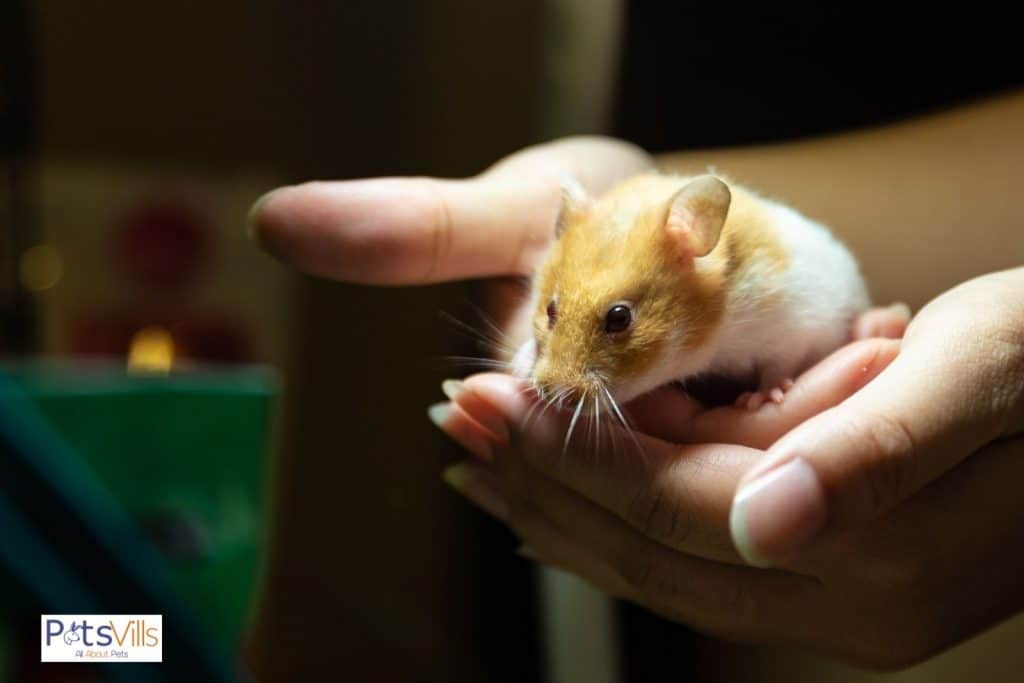
Your hamster may take the treat and run off with it at this point. This is normal. Just keep putting treats onto your hand until your hamster feels confident staying on you.
When your hamster feels comfortable taking a treat and staying on your hand, you can attempt to stroke him with your finger. The best area to stroke him is his body. Make sure you stroke him in the direction of his fur.
If your hamster accepts being stroked, you can move on to pick him up. Do this by moving one hand under him and another over him to support his body.
Make sure you do this inside his cage for only a few seconds to prevent stressing him out.
After your hamster is beginning to get used to being picked up, you can try and do it for longer by taking him outside of his cage.
Using the cupping method listed above, gently move your hamster out of his cage and hold him securely to your chest. This can be scary the first few times for your hamster.
If your hamster bites or goes to the toilet in your hand, don’t punish him. He’s just nervous, but he will eventually grow more comfortable around you.
It might be best to put your hamster back in his cage in these circumstances and try the next day again.
When you have succeeded with taking your hamster outside of his cage, you can try an alternative way of picking him up.
This method involves cupping your hand under your hamster’s belly and positioning your thumb over the top of him to pick him up.
You can then set your hamster onto your other hand to hold him.
Check: Are Hamsters Nocturnal or Crepuscular?
Here are some tips on how to keep your hamsters calm.
How Often Should You Hold Your Hamster?
It’s a good idea to handle and play with your hamster once a day to keep him tamed.
If your hamster has not been with you long, then you may need to increase the amount of time you hold him for gradually.
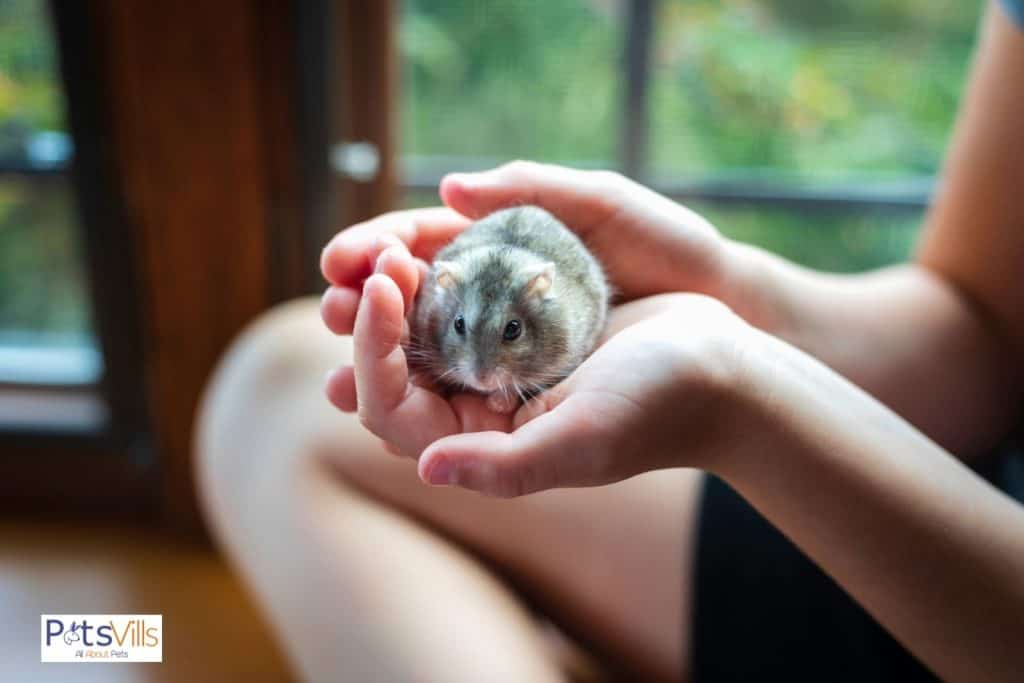
This might mean that your hamster only tolerates being held for a few seconds at first. Be patient and continue handling him daily to help extend the time he will let you hold him.
Consistency is essential to maintain your hamster’s trust.
If you don’t handle your hamster regularly, he may revert to being untrusting and fearful of you.
By playing with them once a day, your hamster will start to get used to your voice and scent and recognize that you’re not a threat.
If you go away on holiday for a week or two, you may have to reintroduce yourself slowly, but depending on how long you’ve had your hamster, they should begin to remember you by your scent and voice.
If you go on holiday, it is a good idea to ask a friend, family, a neighbor or pet sitting company to look after your hamster so you can be sure that they are being fed and well looked after.
We have a handy article on how long you can leave your hamster alone for, link here.
You shouldn’t leave your hamster alone longer than two days (48 hours) as they might run out of food or knock over their water bottle.
The Dos and Don’ts When Holding Your Hamster
Here are some dos and don’ts to keep in mind when holding and handling your hamster.
Dos:
- Wash your hands thoroughly with unscented soap before you hold your hamster. This will make sure your hands don’t smell like food, which could result in your hamster nipping you.
- Talk softly to your hamster. This allows him to feel more at ease around you.
- Let your hamster sniff you before holding him. This will let him know you’re not a threat. You can also judge whether he wants to be picked up by his reaction.
- Hold your hamster correctly by cupping your hands under him gently but securely.
- Keep your hamster close to your chest or lap when holding him to make him feel safer.
Don’ts:
- Never punish your hamster for biting or going to the toilet on you. He is not being mean, he is simply scared or nervous. Place him back in his cage and try again the next day.
- Don’t chase your hamster around his cage trying to pick him up. This is stressful and makes him more likely to retaliate with a bite.
- Don’t use sudden movements, make loud noises, or just grab your hamster to pick him up. Be calm and use the cupping method to hold him.
- Never hold your hamster high up. When handling your hamster, make sure you are sitting down and hold him close to the ground. That way, if he falls or jumps off you, he won’t hurt himself.
- Don’t abruptly wake your hamster up to hold him. This is bound to make him grumpy. Instead, wait until he is already awake, or softly speak to him to wake him up more naturally.
- Don’t force your hamster to be held if he is clearly unhappy or stressed out. Signs your hamster does not want to be touched include hissing, raising paws, growling, showing teeth, and nipping.
- Don’t shout or raise your voice around your hamster as that may startle them and put them on edge. They are more likely to bite if you’re raising your voice as it may scare them.
READ MORE: Everything About Hamster Noises
Tips for Holding Your Hamster
Treats are the best way to boost your hamster’s confidence around you.
Giving your hamster treats will make him begin to associate your presence as a positive and realize that you’re not a threat.
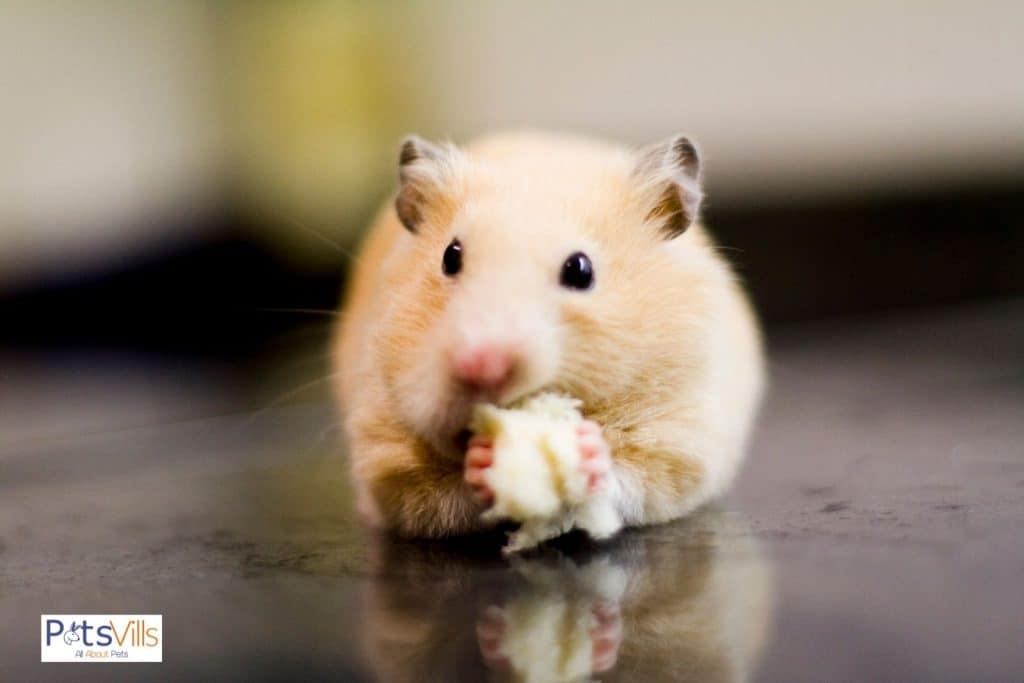
In other words, your hamster will know that when you approach him, he will receive a treat.
This shows him that you’re not going to hurt him, so he doesn’t need to be fearful. If you keep doing this, your hamster will begin to trust you.
Handling your hamster when he is already awake is also a good idea when you want to hold him.
Abruptly waking up your hamster by shaking his nesting box or swooping in to pick him up when he’s sleeping should be avoided.
This will make your hamster scared and have reason to bite you.
Either wait until your hamster is already up, or gently speak to him or offer him a treat to stir him from his slumber gently.
Before handling your hamster, you should wash your hands with unscented soap to remove any possible smell of food. This will reduce the risk of your hamster biting you.

You could also rub your hands on your hamster’s bedding to transfer his scent to you. Hamsters have poor eyesight, so they rely heavily on smell.
If your hands smell similar to your hamster, then he’s more likely to feel relaxed around you.
Want to know if hamsters are good pets for kids? Check out this video:
Do Hamsters Like Affection?
Although naturally shy, hamsters can grow to enjoy affection from their owners.
Hamsters won’t show affection as a dog or cat will, but they can become very bonded to their owners.
A hamster who trusts you will allow you to hold him, stroke him, and pick him up without biting or attempting to run away.
Your hamster might even come up to the cage when he hears you approach to beg to come out.
Some hamsters become so at ease with their owners that they feel comfortable taking a nap in their hands.

In turn, great ways to show affection to your hamster are hand-feeding, stroking, handling, and allowing him time away from his cage.
When letting your hamster out of his cage, make sure his surroundings are safe, and you are supervising him.
This includes ensuring no other pets can get to your hamster, blocking off small nooks and crannies, and making sure your hamster cannot chew on any dangerous materials, such as wires.
Are Hamsters Friendly?
Hamsters can be amiable animals as long as you put the time, patience, and effort into taming them.
When you first adopt your hamster, it will take a couple of weeks for them to get used to their new environment.
There are new smells, noises, and people they are unfamiliar with.
In this period, hamsters are more likely to bite, so it is crucial you slowly build the trust up.
You can start by talking to them and letting them get used to your voice and specific tone.
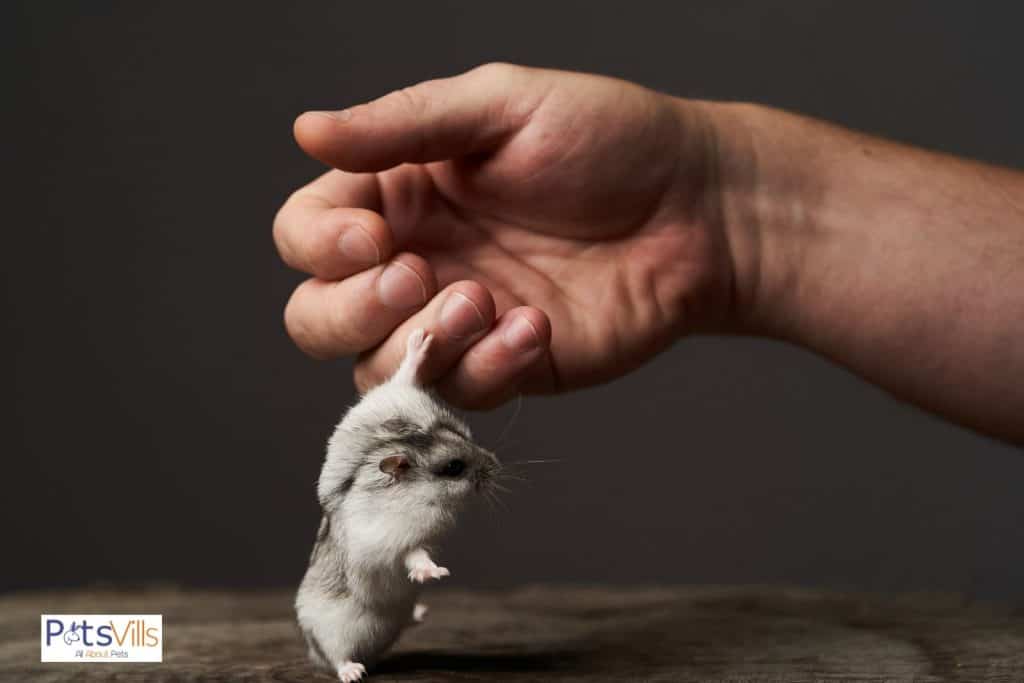
Then once you have done that for a while, you can start letting them smell you and offering them treats from your hand.
We have written a handy article on how you can tame your hamster, in this article it shows you what you can do each week so that your hamster starts to trust you, link here.
When you first get a hamster, they might not be too friendly from the start, especially if they were raised in a pet shop.
This is generally because hamsters in pet shops are not handled often or socialized adequately.
Gaining your hamster’s trust can be a long process. Each hamster is different and has its personality, so some may take more time than others before they warm to their owners.
Seeing your hamster develop and gradually become more comfortable around is a gratifying experience, so it’s well worth your time!
Check out this video to learn tips on how to keep your hamster calm and relaxed.
Are Hamsters Suitable For Kids and Younger Children?
Hamsters can make good pets for children, provided they are cared for and treated correctly.
However, hamsters are crepuscular. This means they are typically more active at dawn and dusk.
Most people are asleep during this time of the day, which means children may not always be able to see their hamsters up and about.
Picking the right species of hamster is also essential. Syrian hamsters are hardier [2] and more manageable for children to handle as they are larger and generally more docile.
Dwarf hamsters, such as the Campbell and Roborovski, can be more difficult to tame as they move very fast and can be nippy. These species are more suited to older children.
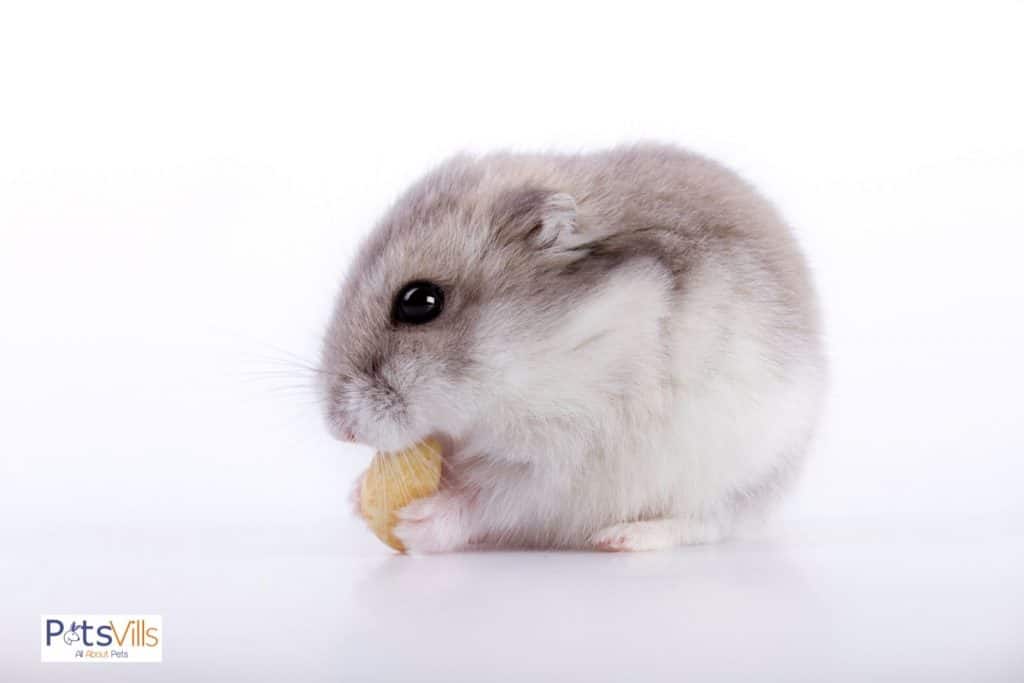
As hamsters can and will bite when frightened, this is something to keep in mind when choosing them as a pet for a child.
Children under the age of eight should always be supervised when handling their hamsters. Parents should ensure their child does not scream, yell, or make loud noises around their hamster.
Hamsters are susceptible to noise, so being noisy could make them bite. Additionally, children (or anyone, for that matter!) should not squeeze or be rough with their hamsters.
As long as parents and children put in the appropriate measures to keep their hamsters comfortable and happy, then there’s no reason why this furry friend can’t be the perfect addition to any family.
FAQs
Do hamsters have feelings?

Yes, hamsters have different moods and emotional states. For example, they can display it when they are happy, angry, bored, and more.
Do hamsters cry?
Hamsters cannot produce tears, but they can scream, squeal or squeak and make other noises to show distress.
Do hamsters show affection?
Hamsters can show affection and enjoy human interaction. Different hamsters have different ways of showing affection. Some enjoy being patted, while others get excited when you go over to them.
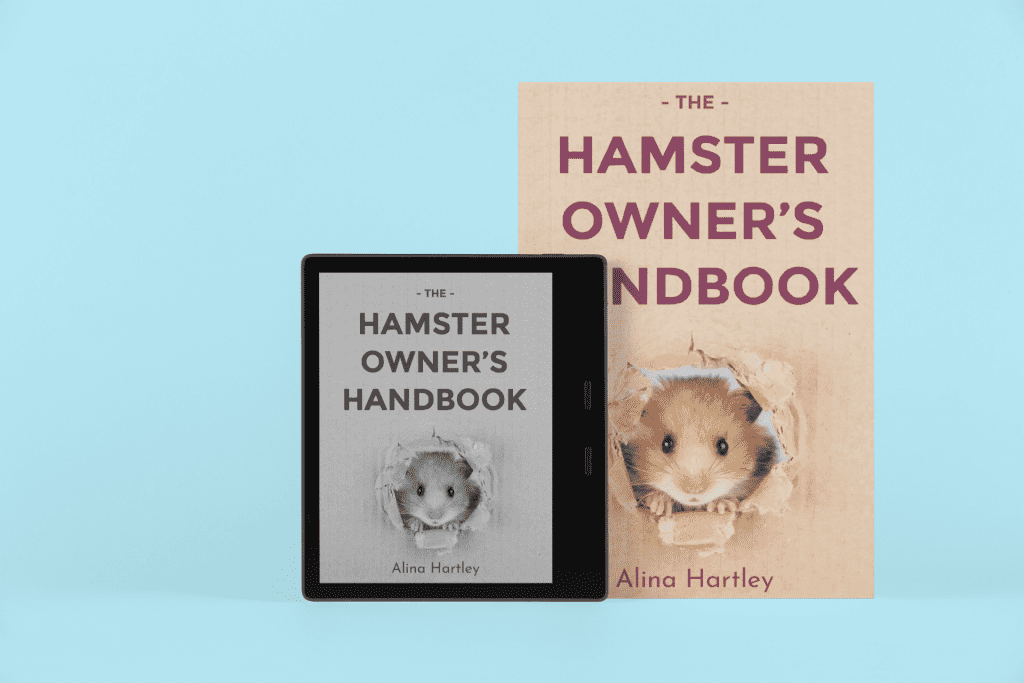

Resources
- 1. Manual B. Hamster Facts: Diet, Habits & Types of Hamsters [Internet]. Live Science. Live Science; 2014. Available from: https://www.livescience.com/27169-hamsters.html
- 2. Syrian Hamsters Syrian Hamsters Syrian Hamsters Syrian Hamsters [Internet]. Available from: http://www.buffalobirdnerd.com/storage/app/media/PSPSyrianHamsters2016.pdf
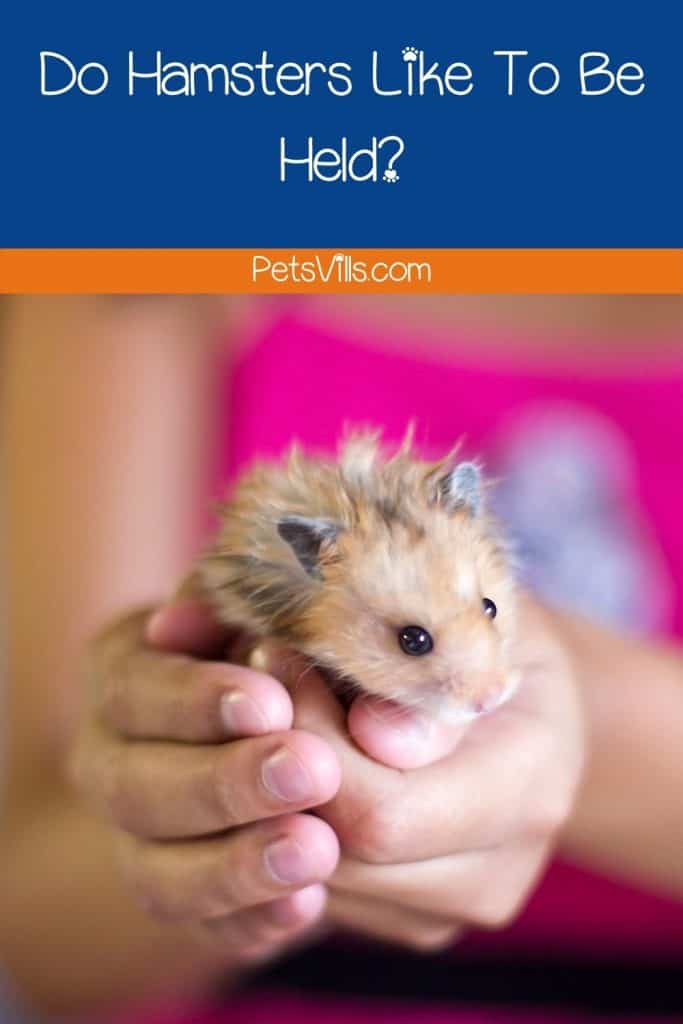
Do hamsters like to be held? Please share your thoughts in the comments below!
Alina Hartley is a small-town girl with a ginormous love of bearded dragons. It all started with Winchester, a baby bearded who was abandoned at the shelter by his former owners because of a birth defect that caused one front leg to be shorter than the other. Alina originally went to the shelter looking for a guinea pig, but one look at Winchester and it was love at first sight. From that day on, Alina has dedicated her life to learning everything she can about bearded dragons. She loves helping new beardie parents start their incredible journey with these magnificent reptiles.
Follow her on:
LINKEDIN
TWITTER.
Read her latest articles HERE
Learn more about her HERE.

